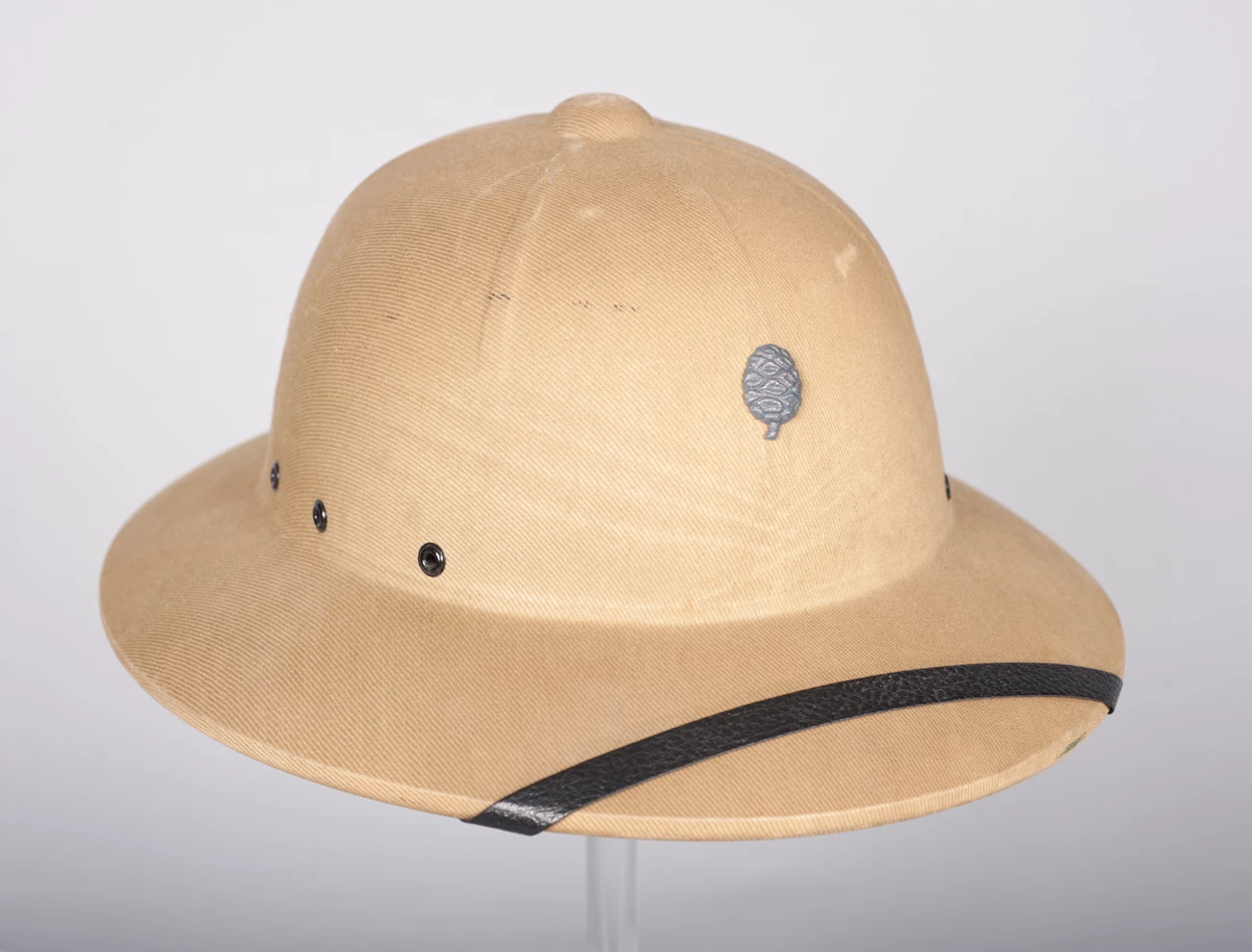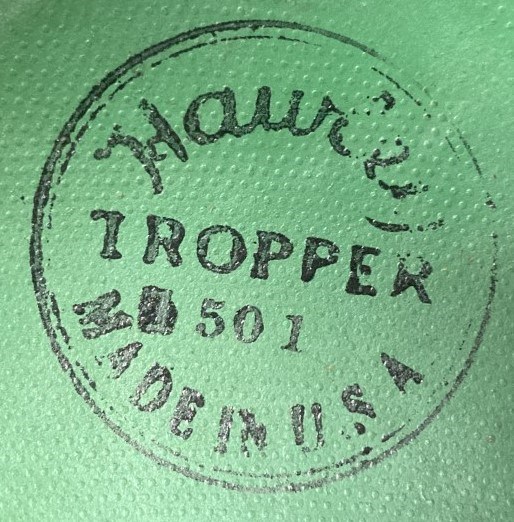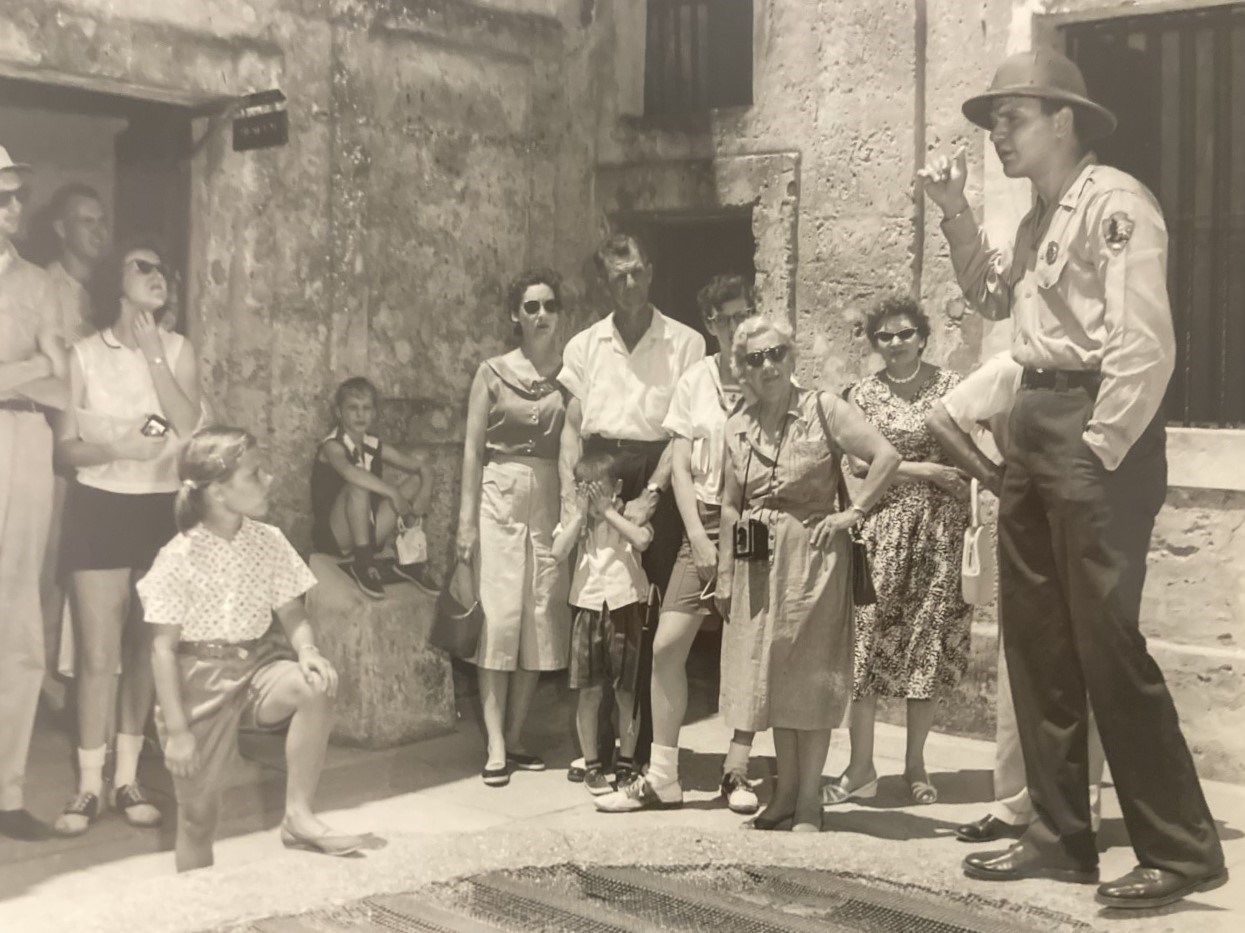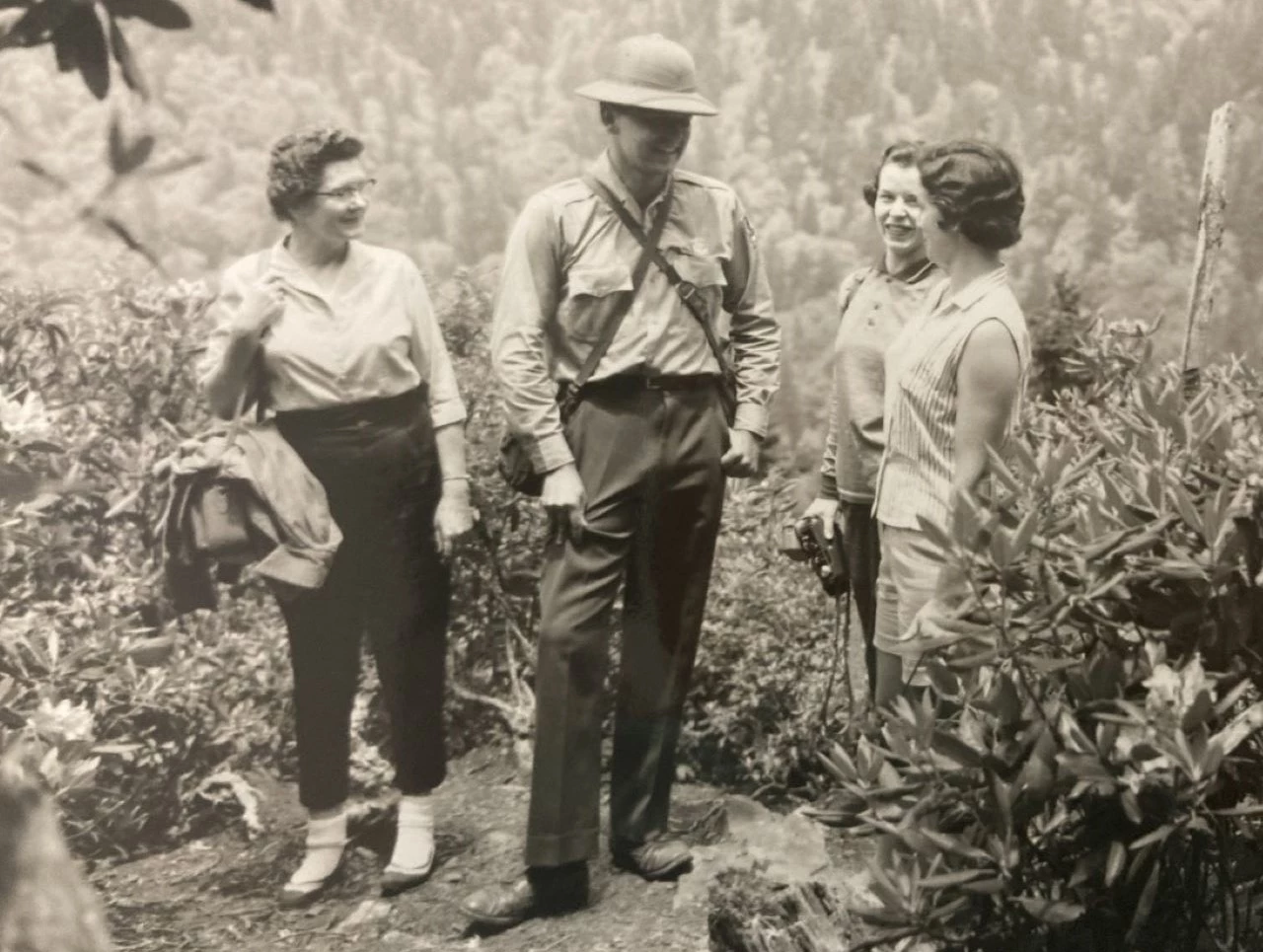Last updated: December 12, 2022
Article
50 Nifty Finds #5: Keeping Their Cool
The park ranger uniform is known the world over. Perhaps the most iconic part of the uniform is the broad-brimmed ranger flat hat. Over the last century, however, many different kinds of hats have been worn by rangers depending on their gender, where they work, the season of the year, and the jobs they do. While a pith helmet may bring up images of Colonial Britain, World War II soldiers, explorers, or people on safaris, for a while it was also be worn by some park rangers.

A Hot Topic
At the January 1939 superintendent's conference, there was a recommendation for “the use of an aluminum-colored pith helmet in hot or humid climates” with a sequoia cone ornament on the front. It further stated that “in historical or military areas it be left to the discretion of the superintendent whether helmets, caps, or hats are to be worn, provided that the use of one type of headgear be uniform within the area.” The order was issued in April 1939. It turned out, however, that aluminum-colored helmets weren’t available, and the color was changed to forestry green. A suitable sequoia cone decoration couldn’t be found either, so it was left off the helmet.
On November 22, 1940, the National Park Service (NPS) issued new uniform regulations. Recognizing that the standard uniform didn’t suit all locations, employees at Death Valley National Park were permitted to wear a different uniform. Sand tan-colored shirts and pants in a cooler fabric replaced the green wool of the traditional uniform. Although a tie was still required, the coat (known as a blouse) was not. The forest green sun helmet was replaced by a tan one with a silver sequoia cone emblem on the front.
In 1950, the NPS expanded its use of the warm weather uniform. The “sand tan” uniform was re-branded the “sun-tan” uniform. Regional directors could authorize its use “in any area administered by the National Park Service in which the summer temperatures are extreme.”

A Novel Hat of Novel Composition
By the 1930s pith helmets, which previously had been worn mostly by European military forces in Africa and Asia, began to be worn by civilian colonists as a sun hat in tropical climates. In the Americas, it was worn in the subtropics. Presidents Theodore Roosevelt and Harry S Truman had them. Originally made from pith, soft tissue inside the trunk of the Indian Sola tree, cork became the preferred material of many manufacturers. In the United States, Hawley Products of St. Charles, Illinois, developed a different material for making the helmets for the US military and the civilian market.
The patent request submitted by Jesse B. Hawley in 1935 described it as “a novel hat composed of a novel composition” which is “light in weight, which has excellent heat transfer insulating properties, which will not absorb and hold fluids and thus be fluid proof, which is impervious to fluids, which may easily be cleaned without an injurious effects to the hat, which is stiff, tough, and durable, which may be colored and decorated as desired, which may have coverings of any desired material, which will maintain its shape or form, and which may have the appearance of a hat made of other materials.” The “fibrous material” could be “initially deposited, accreted, interlaced, and integrated so as to form a seamless integral and stiff hat in the final desired shape…free of internal stresses…thus avoiding warping, distortions, and the like.” A second patent request in 1936 included an adjustable sweat band that is also seen in the sun helmet in the NPS History Collection.

The March 29, 1938, patent (#2111212) describes the hats being made from fibrous pulp made from wool, cotton, linen, silk, jute, hemp, asbestos, kapok, or similar fibrous material or any combination of those fibers. Water proofing wax, wax emulsion, paper-makers' resin, latex, or powdered or emulsified asphalt was added to the pulp for water proofing and stiffening the fibers and alum was used “to set” those materials in or on the fibers. Alternatively, starch, glue, casein, or silicate of soda could be used to “proof” the fibers, in which case the alum was unnecessary.
The model of the sun helmet in the NPS History Collection is the Tropper; it was marketed as a tropical helmet. The August 1936 edition of Boys Life advertised the Hawley Tropper as a sun and rain hat for boy scouts. It claimed that it insulated wearers from the sun’s heat and was “air cooled by a new scientific principal” to keep the head 12 to 25 degrees cooler. Cloth-covered khaki or white versions were sold for $1.00 and $1.50 respectively.
Staying in the Shade
In September 1953, the sun helmet was removed from the uniform regulations. As was often the case, however, some employees continued to wear them (presumably with approval by park superintendents). In fact, the sun helmet in the NPS History Collection was worn at Chickamauga and Chattanooga National Military Park by park historian Lee Wallace during the summer of 1957.
At least two photos in the NPS History Collection also document the continued use of the sun helmet years after it was removed from the uniform regulations. The first, taken at Castillo de San Marcos National Monument in 1958, shows a ranger wearing what appears to be one of the forestry green sun helmets authorized in 1938, which shouldn’t have been worn since 1940.

The second image is even later, as it was taken at Great Smoky Mountains National Park in 1960. In both cases, the helmet is worn with the standard uniform.

Sources:
“The Hawley Pressed Fiber Sun Helmet—Patented.” Accessed December 9, 2022, at http://www.militarysunhelmets.com/2016/the-hawley-pressed-fiber-sun-helmet-patented
“Hawley Tropper Sun and Rain Hat.” (1936, August). Boys Life, p. 26. Accessed December 9, 2022, at https://books.google.com/books?id=2fFdBrtFErYC&q=hawley+products+company+st.+charles&pg=PA26#v=snippet&q=hawley%20products%20company%20st.%20charles&f=false
National Park Service (1998). National Park Service Uniforms, The Developing Years, 1932-1970. Harpers Ferry Center.
Schneider, Sven Raphael. (2016, August 12). “Safari Hat Primer.” Gentleman’s Gazette. Accessed on December 9, 2022 at https://www.gentlemansgazette.com/safari-hat-primer/
US Patent #2112383 (1938, March 15). Accessed December 9, 2022, at https://ppubs.uspto.gov/pubwebapp/
